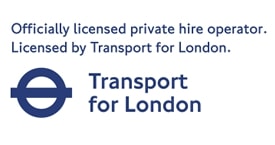London Gatwick Airport renews push for second runway
Gatwick Airport will resurrect proposals for a second runway this summer as it ramps up efforts to become London’s main gateway to booming economies in Asia. Details of the airport’s plans have emerged as its chief executive, Stewart Wingate, blamed rival Heathrow for giving foreign airlines a false impression that London was“closed for business”.
Gatwick, which has been owned by Global Infrastructure Partners since 2009, will publish a “master plan” next month setting out what the airport will look like in eight years’time.
The airport’s bosses will also float two scenarios for how it could develop after 2020 -including the case for a two-runway airport.
In an interview with The Sunday Telegraph, Mr Wingate said a second runway at Gatwick or Stansted would be less problematic - and costly - than either a new airport in the Thames Estuary or expansion at Heathrow.
The costs of building “Boris Island” seemed “prohibitively expensive”, he said, while a third Heathrow runway could cost in the region of £10bn-£15bn.
More people would be affected by the noise created by an enlarged Heathrow than at Gatwick or Stansted, the former BAA director added.
“There’s a noise contour which says that in and around Heathrow there’s about a quarter of a million people that live very close to that noise contour.
“But the equivalent numbers for Stansted or Gatwick are broadly comparable at about 2,000-3,000 living in the same noise-impacted area.”
Gatwick is restricted from building an extra runway before 2019 but has safeguarded land for the purpose.
The debate around capacity in the south-east has intensified over the past few weeks as the industry awaits the Government’s long-delayed aviation white paper.
Tomorrow [Monday] the Aviation Foundation, an organisation founded by BAA, British Airways, Virgin Atlantic and Manchester Airports Group, will set out a series of tests against which it believes government aviation policy should be measured.
However, Mr Wingate warned messages put out by BAA over a capacity crisis were, in fact, damaging London’s ability to secure more long-haul connections.
The airport boss, who previously managed BAA-owned Stansted, said many foreign airlines have the false impression London’s aviation market as a whole is “closed for business” due to an “obsession” in some parts of the industry with Heathrow.
“With the messaging from Heathrow at the moment there’s this perception that Heathrow’s full [and therefore] London’s closed,” he said.
“As far as I am concerned that is a terrible message to be giving to these people [in emerging markets] when you actually have significant capacity at Gatwick and at Stansted too.”
Gatwick carries about 34m passengers a year but estimates it will hit 45m by the middle of next decade.
“We read a lot about the hub debate and about only a hub airport can develop long-haul routes and we don’t believe that thesis,” Mr Wingate said.
A spokeswoman for BAA said: “Whilst there are point-to-point airports in London with spare capacity, only hub airports have sufficient scale for transport passengers to support network airlines. UK businesses trade 20 times as much with emerging markets with daily flights than those with less frequent or no direct service. Yet without the transfer passengers a hub provides, direct long-haul connections between the UK and many important business destinations are not viable.”
Telegraph




